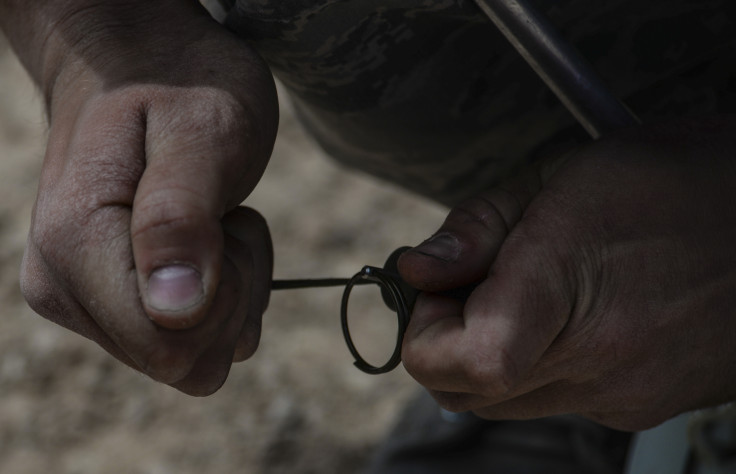Two Ukrainian Kids Injured After Grenade They Were Playing With Explodes

KEY POINTS
- Two boys in Novoivanivka, Ukraine, found what is believed to be a grenade and took it home
- The children sustained injuries Saturday after the object exploded during a game
- Police have urged citizens "to be vigilant and careful" following the incident
Two boys in Ukraine's partially Russian-occupied Zaporizhzhia province were injured after an apparent anti-tank grenade they found on the street detonated inside a home Saturday, local authorities said.
The minors, identified only as a 3-year-old and a child born in 2012, "received bodily injuries of varying degrees of severity" as a result of the incident that occurred Saturday in the village of Novoivanivka, Zaporizhzhia police said in a statement released that day.
The two had found an "unknown elongated cylindrical object" and brought it home, but the object ended up detonating during a game, cops established.
They were taken to the regional center's medical facility after the blast, with doctors later sending the 3-year-old home, while the older boy was hospitalized.
Their current conditions are unclear.
Police did not disclose the relationship between the two children.
Law enforcement personnel reportedly determined the remains of the explosive object to be the handle of a Soviet-era RKG-3 anti-tank hand grenade following an inspection.
"After carrying out all the necessary procedural actions, the event will be given a legal qualification," a machine translation of the Zaporizhzhia police statement read.
Authorities have urged citizens "to be vigilant and careful and to explain to children that they should not touch suspicious objects."
"The detection of such dangerous finds should be immediately reported to the relevant specialized services by calling 101 or 102. Before the arrival of specialists, if possible, mark the place where the object was found using improvised means and move to the safest possible distance," police said.
Ukraine was able to clear more than 240 square miles of land that had been littered with thousands of explosive devices as of August 2022, Reuters reported that month.
However, about 116,000 square miles of land were still deemed "contaminated" at the time, data released by Ukraine's Emergency Services showed.
It could take a decade to turn that land safe again, the Ukrainian government said.
Meanwhile, it could take five to seven years for Ukraine's territorial waters to be removed of mines, according to then-Ukrainian interior minister, Denys Monastyrskyi.
"These territories are affected not just by mining itself but also by heavy pollution from explosions and from rockets. The consequences of such pollution... could last for decades," said Sofiia Sadogurska, a climate expert at the Ukrainian environmental organization Ecoaction.
Unexploded munitions such as artillery shells, mortars, grenades and rockets cause "large numbers of civilians" to die every year, according to the International Committee of the Red Cross.

© Copyright IBTimes 2025. All rights reserved.





















